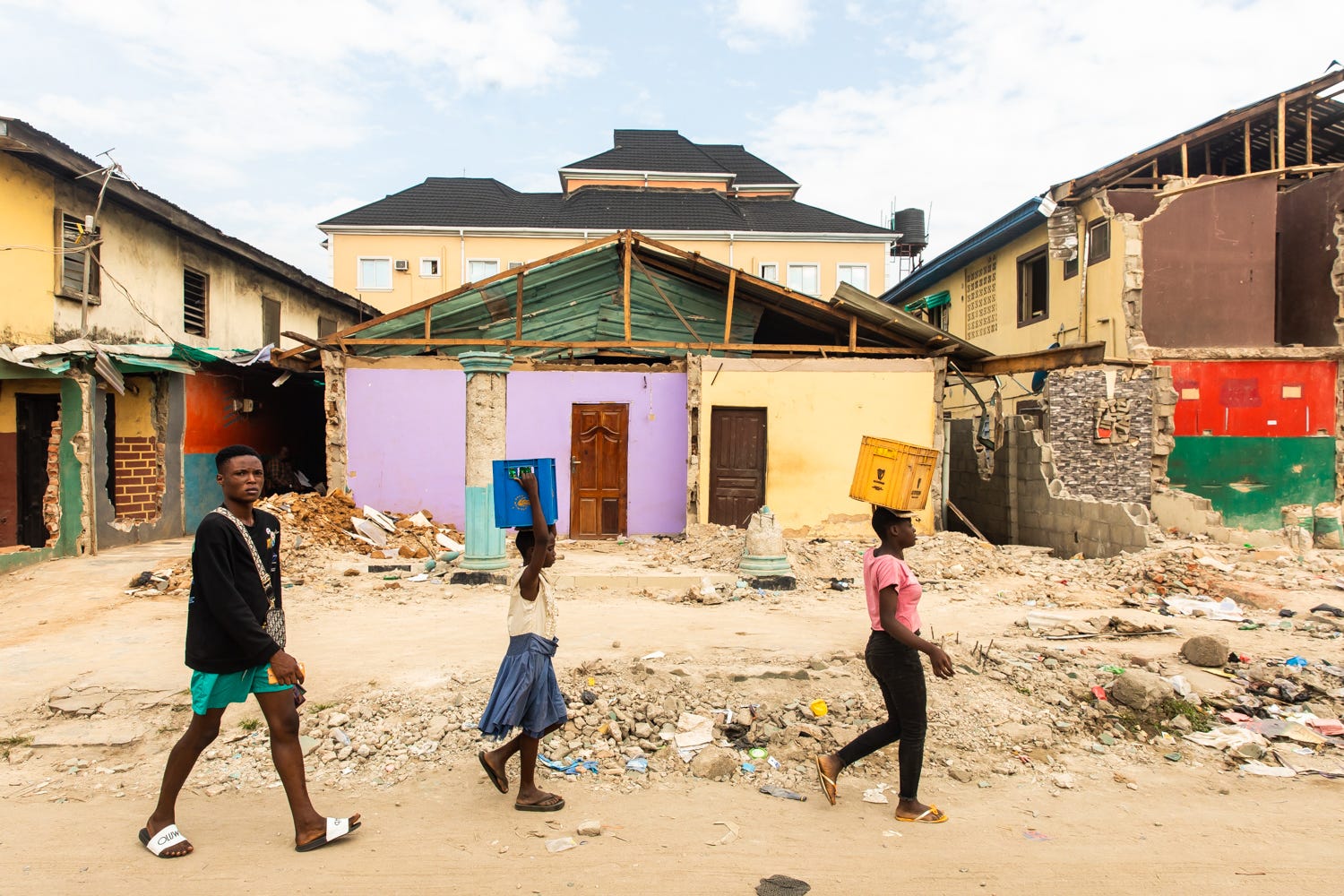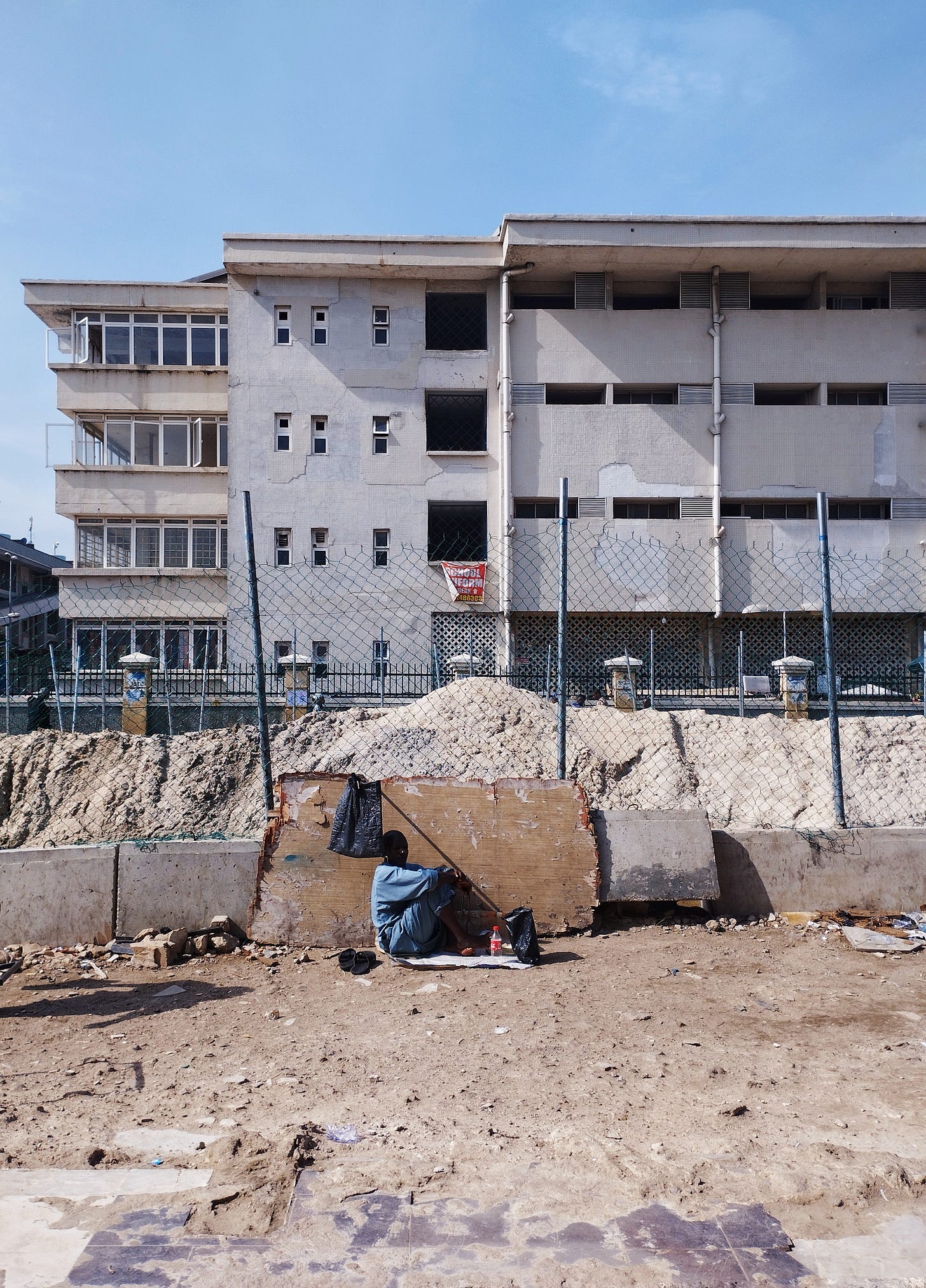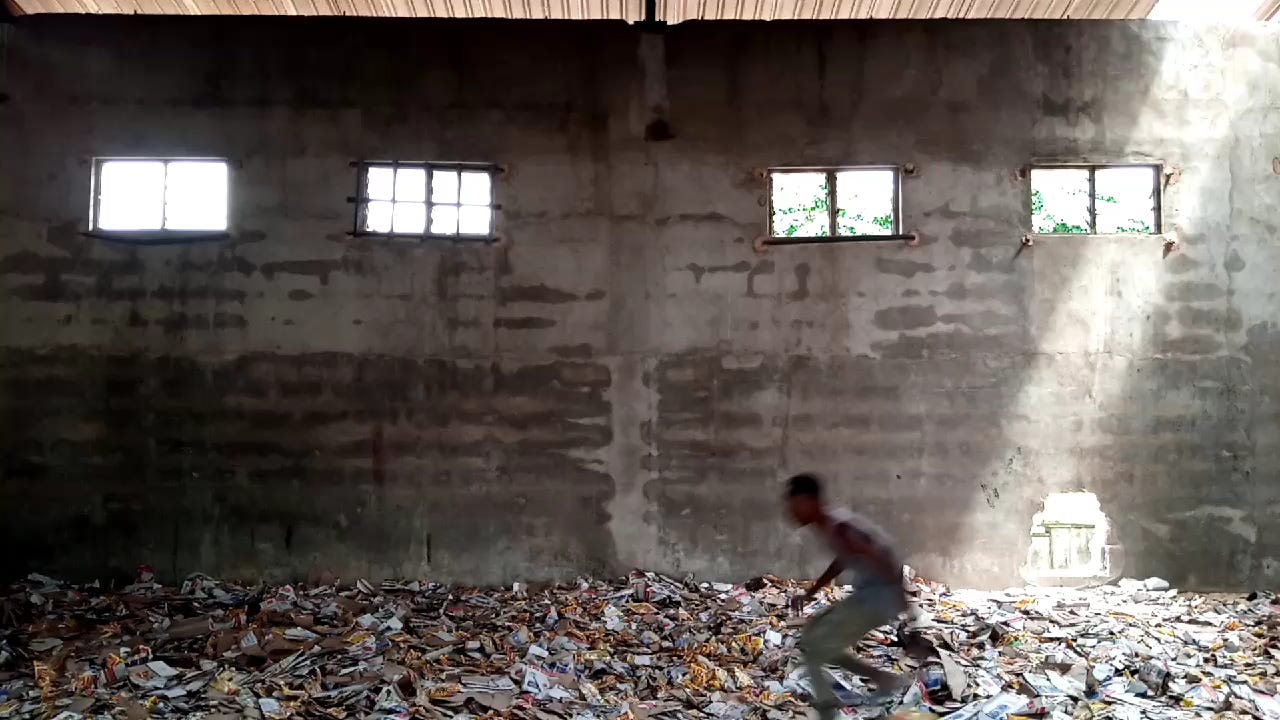Make Way For Me
A Photograph by Ọlájídé Ayẹni
Behind these older, broken houses, there is a new one, existing, as it were, under false assurances. The young man who casts a stern look at the camera is old enough to know a street in different arrangements, without a scattering of rubble, and the same can be said of the girls bearing beer crates. For some walls in the demolished buildings retain their colour, their recentness. All three passersby are in the middle of a stride, marking impermanence as a lesson of the photograph.
Ọlájídé Ayẹni: “My approach to photography is usually to see how the story of a place affects the people and vice versa.”
The photograph was taken in Mushin, Lagos.
I have an image of the same view from about 4 years ago, and I knew I wanted to take another picture of the same view that showed some contrast in time. I had been photographing this road as part of a project for some time and I wanted to see how the current construction of an overhead bridge was impacting the environment. Later on, I whipped out my phone and took an image of the building.
This photograph is special to me because it reveals how time can alter our understanding of familiarity with a place. Due to recent construction, the dynamics of space in this area has changed; buildings were pushed back by demolition to make way for a new bridge, yet this new bridge impacts traders and passers-by even if it is for the greater good. The irony of difficulty within goodness makes this photograph and others like it special to me.
My approach to photography is usually to see how the story of a place affects the people and vice versa and how best to tell it with images.
Photography is a powerful imaging tool that can be used to shape a narrative, an idea, or an agenda about a person, people, or place. You can make people think a certain way about a certain place just by photographing it and this comes with a lot of responsibility.
Two other photographs by Ọlájídé Ayẹni
Ọlájídé studied architecture at the University of Lagos. His works highlights unnoticed elements in the Nigerian built environment.
Last Week — Léa Thijs
I always keep in mind my subjectivity, and stay conscious of how my being impacts what my photographs show. I know I can't tell somebody else’s story in an impartial manner, although that's what people generally associate with photography. My point of view is always anchored in every picture. Instead of trying to hide this subjectivity, I use it as a starting point in my projects. I listen to people's stories and ideas, and then associate them with my sense of self and experiences of the world. I let my photographs show me who I am, rather than trying to control what I want them to say.
Read more: My Father and I
Support Ọlájídé Ayẹni
Thank you for reading and sharing this feature. See more work on Ọlájídé’s website, the PHmuseum website, and follow him on Instagram.
Support Tender Photo
This is the 26th edition of the newsletter. Every week I feature one photograph and the photographer who took it. You’ll read a short caption from me, and a statement from the photographer. My goal is to set up conversations with the work of early to mid-career African photographers. If you know of any photographer whose work is deserving of attention, please email me with their name(s).







In the third photograph, we see four windows, the door (I assume one exists), is out of sight. I like to think the young (I assume the age here, because it fits the point i will make at the end) moving person, entered through the roughly carved hole in wall. As is usual for me, the photograph serves as a door into my current preoccupation, so it reminds me that - as it is in life, it is in art, you do not need to enter through the expected routes, you can create yours. Especially if you are young.
Thank you for sharing your thoughts on photography. Great time reading this.